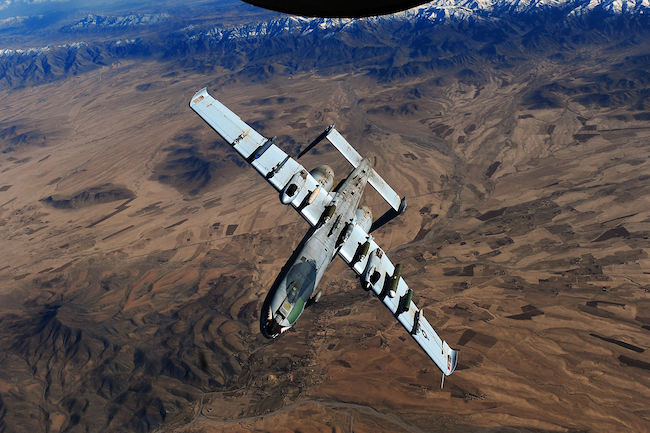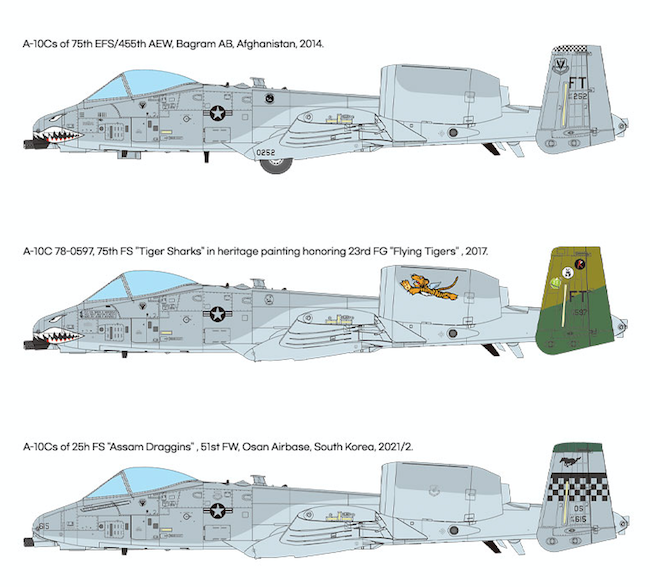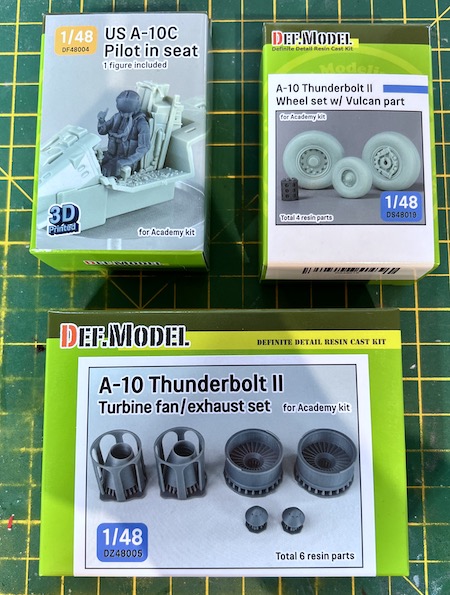
Full Review with Dave Coward
Just before we get started, here’s a look at how it all turned out…


Background
The Fairchild Republic A-10 Thunderbolt II is a single-seat, twin-turbofan, straight-wing, subsonic attack aircraft developed by Fairchild Republic for the United States Air Force (USAF). In service since 1976, it is named for the Republic P-47 Thunderbolt, but is commonly referred to as the “Warthog” or simply “Hog”. The A-10 was designed to provide close air support (CAS) to friendly ground troops by attacking armoured vehicles, tanks, and other enemy ground forces; it is the only production-built aircraft designed solely for CAS to have served with the U.S. Air Force. Its secondary mission is to direct other aircraft in attacks on ground targets, a role called forward air controller-airborne; aircraft used primarily in this role are designated OA-10.

The A-10 was intended to improve on the performance and firepower of the Douglas A-1 Skyraider. The Thunderbolt II’s airframe was designed around the high power 30 mm GAU-8 Avenger rotary auto-canon. The airframe was designed for durability, with measures such as 1,200 pounds (540 kg) of titanium armour to protect the cockpit and aircraft systems, enabling it to absorb damage and continue flying. Its ability to take off and land from relatively short runways permits operation from airstrips close to the front lines, and its simple design enables maintenance with minimal facilities.

It served in the Gulf War I (Operation Desert Storm) where the aircraft distinguished itself. The A-10 also participated in other conflicts such as in Grenada, the Balkans, Afghanistan, the Iraq War, and against the Islamic State in the Middle East.

In 2005, a programme was started to upgrade the remaining A-10A aircraft to the A-10C configuration, with modern avionics for use with precision weaponry. The U.S. Air Force had stated the Lockheed Martin F-35 Lightning II would replace the A-10 as it entered service, but this remains highly contentious within the USAF and in political circles. With a variety of upgrades and wing replacements, the A-10’s service life can be extended to 2040; the service has no planned retirement date as of June 2017.

The Kit…
This is a new tool kit (2023) that represents an A-10C. Both Italeri and HobbyBoss have produced an A-10 in recent years but this model takes a different approach to these kits in that it has used slide moulding technology for the engine pods and fuselage and has some very nice surface detail both recessed and raised. The parts come on eleven grey plastic sprues and 3 clear sprues and offers the following options:
- Open or closed canopy
- Open or closed air brakes
- Nicely detailed cockpit and ejection seat with pilot figure included
- Extensive weapon load including:
- GBU – 12 / 38 /54
- Rocket pods
- AAQ – 28 Targeting pod
- Sniper Pod
- AIM – 9M Sidewinders
- ALQ – 184 ECM Pod
- Eternal fuel pod
All the markings are for aircraft allocated to the 75th Flying Tigers with eleven options included. There are also stencilling for all the stores.


And now for the really nice part, the price. You get all of this for between £35 and £40 (Uk price in July 2023)
Aftermarket
Now there are weaknesses with the kit and the most notable are the shallow intakes with the engine compressor blades being far too close to the intake lip. This is quite noticeable if you know what to look for and if you opt to remedy it there are several aftermarket options available. I chose a replacement engine set from DEF Models that had both a corrected intake and better detailed exhaust. Additionally, I purchased two more DEF sets, one containing resin wheels and a resin gun barrel and the second a pilot both of which were better detailed than the kit parts. For the cockpit I used Qunita’s 3D decal set and a set of masks (both inside and out) from Artscale. The final purchase was a metal pitot tube from Master as this would be a lot more robust than the kit plastic part.

